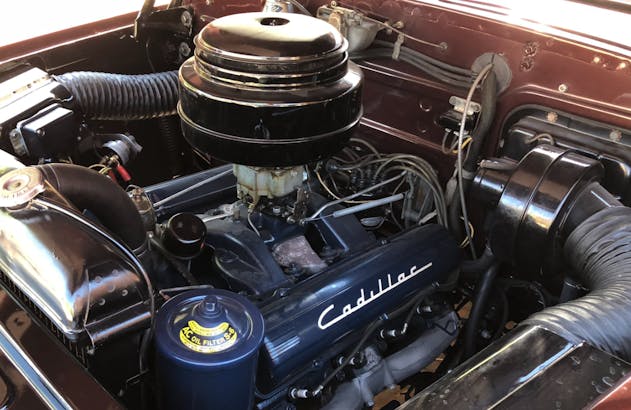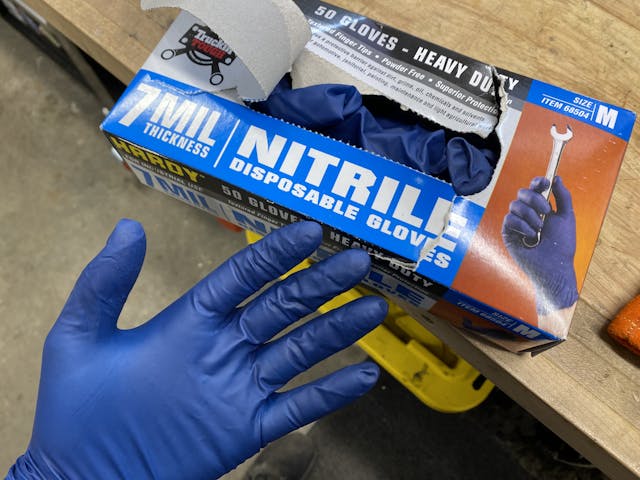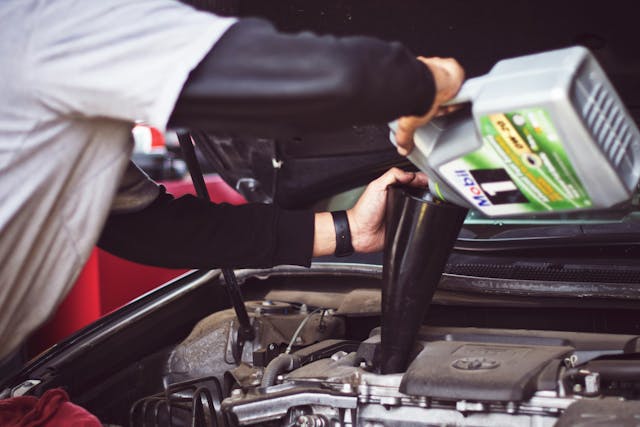8 oil change dos and don’ts
It’s a small job that somehow became a rite of passage for gearheads: Oil changes. The draining and refilling of engine oil is the first task that many budding wrench-turners undertake, and its certainly an important one. Like any other task in the automotive world, there are some pieces of institutional knowledge that comprise the key dos and don’ts for a smooth oil change. So let’s put these lessons learned out in the open, with the mission of shortening the process for newbies. And perhaps to reinforce some best practices for you veteran mechanics?
Don’t go crazy with warm-up

Modern oils are pretty amazing at suspending particles and contaminants, but there is still some junk that sinks down to the bottom of the pan. It needs to be stirred up to ensure it escapes when you pull the drain plug. Starting the engine and letting it idle for a minute or two is perfect for that final circulation. Run it any longer and you’re rewarded with nothing more than scalding hot oil that does nothing more than burn you. Before you pull that (drain) plug, give the engine a minute after shutting down, allowing the oil to drain to the pan from the nooks and crannies higher in the engine. But before you get underneath the vehicle to do the deed, remember you must…
Wear disposable gloves

Nitrile gloves keep you from soaking up solvents and oils into your skin. I’ve found 7mil thick to be a nice sweet spot of durable and affordable.
We all know the guy at the auto parts counter who has seriously gnarly hands from all the years being soaked in oil over decades of engine builds. That’s the visible damage. The invisible damage is sitting in your internal organs. All the hydrocarbons that get absorbed through the skin and are processed in our gut where they can’t be broken down. They end up accumulating in our body, which can cause serious health complications after years and years of chemical exposure. Preventing those issues is easy as putting on a pair of nitrile gloves. Use them even if it’s only for pulling the filter and drain plug, which you can do efficiently with…
The drain plug trick

It’s not groundbreaking, but nothing feels better than the perfect pull on a drain plug to ensure you don’t get any oil on your hand. The trick is pressure, not pulling. As you unthread the plug by hand, push in–against the bolt as in comes out–so the threads act as a seal with the outer edge. With a little practice you can get the pressure right (while not rocking the plug in the threads) and can spin the plug a full turn to feel for the “click.” That click means the bolt overlapped the last thread. With a swift motion away from the direction of oil flow, remove that now-loose plug. Presto! This can make thin viscosity oil changes much cleaner, and thick stuff like 20-50 can sometimes be spotless. In your excitement of not having a mess to clean up after draining, make sure you…
Don’t over tighten the drain plug or filter

It’s come to the point where stuck filters and stripped drain plugs are no longer a joke. Neither the filter nor plug require any real torque when installed properly. Use a small amount of oil to lube the filter’s rubber seal, then spin it into place. After the gasket seats on the housing, turn it only about three-quarter of an additional turn. Some applications might call for a full turn, but that is usually reserved for heavy duty equipment. Any tighter than what the filter manufacturers call for and you run the risk of deforming that rubber seal, which could cause oil to leak past the seal. That’s bad news. Any oil spillage is bad, so when you are filling…
Just use a funnel

The oil fill port on most engines is in that perfect spot where it looks like you could pour directly into it, except that’s a lie. They seem to be ideally located, but cleaning up if you miss (by even the smallest margin) can be a major pain. Are we really going to work so hard to spot and address leaks, to keep our engines clean, and just ruin it while doing routine maintenance?
I’m not. A funnel all but guarantees I won’t have to do any clean up after filling, even if I’m distracted or letting my 7 year-old niece do the filling. Putting in that fresh oil feels good, but be careful and…
Don’t overfill

This shows the rotating assembly without the oil pan and it’s easy to tell how oil at too high of a level would be bad.
Too much oil is just as bad as not enough. Seriously. The oil level in a wet-sump engine is carefully calculated to keep the rotating assembly from whipping through the oil. That action causes foaming, and oil foam pushed through the oiling system is the same as not having oil at all. I don’t need to tell you how bad that can be, so check the service or owners manual for the proper fill level. When done, look at the dipstick as a double check. Luckily, the empty oil containers you now have at this point are are perfect to…
Recycle your used oil

It’s never been easier to properly recycle used oil, so there is no excuse to do otherwise. Just about any auto parts store takes it, so they should be your first trip in your freshly serviced vehicle to “return” your oil. Be sure to capture oil in a non-contaminated pan so that the oil can actually be recycled. Coolant is the main enemy here, so be sure to flush your drain pan before the oil change. Luckily you don’t have to worry about how dusty or dirty the pan is, but other fluids can defeat the purpose of recycling. But before you make the trip to recycle the oil, be sure to…
Reset the computer (or write down your service date)

Modern cars have an oil life monitoring system. Whether you trust it is a personal preference, but for the sake of eliminating confusion, go ahead and reset it now. Most reset procedures involves cycling the ignition key and pressing the throttle pedal a certain number of times. The service manual will outline it, or a quick search to an online make/model specific forum will have the instructions. If your vehicles are of the manual variety, write down the oil change date in a log book. Or consider service tracker kept in the car or garage, as it keeps you from forgetting what’s been done. Not to mention thisa paper trail shows good stewardship to a potential next owner, which can mean an easier sale for more money.
In all, oil changes can be simple and rewarding for newbies and DIY enthusiasts alike. Following these best practices will not only keep your vehicle happy, but also make the experience better for you each time. Do you have something specific you add to this process? Let us know about it in the comments below.
***
Check out the Hagerty Media homepage so you don’t miss a single story, or better yet, bookmark it. To get our best stories delivered right to your inbox, subscribe to our newsletters.



You didn’t mention it but you did put it in practice. When pouring the new oil out of the plastic bottle ensure that the angled side at the top of the bottle is on the down side of the pour. This allows the air to replace the oil in the bottle.
Change the oil filter first! Nothing worse than dropping it into a pan full with oil.
I use a sharpie to put the date on the oil filter(light blue OEM Nissan) so it shows the last date done right in front of you.
I was always told to add some oil into the oil filter before installing . Is that still valid or have things changed since those days
My 1995 Corvette is driven approximately 2500 miles per year. It gets Mobil 1/AC Filter changes twice a year. I’m “the guy” you want to buy a used Corvette from. Lol!
One important DO that should be mentioned is after the oil change is done and you start the engine look under the car and check for leaks. I once had a defective oil filter that was leaking at the crimp. Had i driven the car to work thew next day I probably would have blown the motor.
Ever drop the center full belly pan on a Ferrari 355 to change the oil? It ain’t fun or quick.
Fill the oil filter prior to installing…nobody wants to listen to their engine pound for a couple seconds on startup
Make sure the oil filter is completely screwed down before you start the engine boy can the oil pump can really empty the oil. I know from experience
Bottom line— change your oil at a mileage interval that makes sense and your comfortable with.
I’ve been doing my own oil changes for decades now and not too many years ago (two to be exact) I started using K & N filters on my 1968 Chevelle 396 L-34. After the last drop or two stopped draining out of the pan I reinstalled the plug using a new nylon-style gasket. With the old filter off I thoroughly cleaned the engine block base in preparation for installing my pre-filled K & N filter (oiled up the gasket of course) and spun it on being careful not to do any cross-threading. I then tightened up the filter as per every other oil change and ran the engine to ensure no leaks were present. This was done as the final oil change for the season as I then put the car into winter storage. The following Spring on the initial start-up all seemed normal. I got out of the driver’s seat to do a walk around and then it happened. Oil started flowing out onto my epoxied floor. I immediately shut down the engine and scrambled to throw down nearby rags to catch the oil before it could make it to the driveway. I reached under the car and used a filter wrench to check the tightness. I was able to turn the filter 1/4 turn at most sensing it really was quite snug. I restarted the engine after adding almost another full quart and the belching was no longer. I was so unnerved by this event that I phoned K & N. They said I didn’t torque it down enough and that was why it leaked like hell. Why didn’t it leak when I ran the engine for 5+ minutes in the Fall after performing the oil change?? Has anyone else had this experience with K & N? I used GM filters prior to trying out K & N and not once did I ever have so much as a leak.
Going with OEM filter is my rule of thumb. Been doing it that way for some 40 years now, no matter what make the car is. If it came from the factory that way, it’s how the engineers meant it to be. Only deviation is on GM vehicles: their factories install the filter dry, so it’s gasket gets baked onto the block and is a pain in the butt to remove)
If you put an extension on the socket you use to remove the oil drain plug, your hands are far enough away from the oil when it comes out. As far as used oil, those that used to take it no longer do because of the liability of it being contaminated. I spray it on the under side of my vehicles. Another is to give it to someone with an oil burner.
Do not spray used oil on the underside of any vehicle. It is full of toxic contaminants that cause cancer. You are basically dumping it directly into the environment.
When you’re all done. Take the cool ride out for a drive. Back home it’s Bourbon and cigar time, sitting in the rocker on the Front porch waiting for the big bucks to come to the feeder.
TEXAS HILL COUNTRY
GOOD TIMES
You can have your oil analyzed and know for sure if you can go longer or not. The last test I know of was on a first gen Honda Insight 3 cylinder with 11,000 MILES and the test came back the oil was still to spec and their advice was go to 13,000 on the next change. Guess all you want but facts matter.
Running the engine to warm up the oil is not needed for newer cars, especially those running ultra-thin 0W20 and so on. Just drain it cold – and as a bonus *all* of the oil will be sitting right in the oil pan, along with the suspended contaminants. This means you drain more dirty oil.
Another tip is to lubricate the groove that the oil filter gasket sits in, as well as the top of the gasket that mates with the engine. This guarantees the gasket will slip as the filter is tightened and not get bunched up because it’s sticking to the filter.
For those who want to totally prevent getting oil gushing on their hand (and down their arm) several automotive tool manufacturers offer a magnet that is attached to a screwdriver handle with a flexible shaft. (Much like a picker-upper but with a springy flex shaft). You loosen the drain plug a couple turns by hand, then stick the magnetic end of the tool on the drain plug, and turn the handle to remove the drain plug while keeping clear of the escaping oil.
And as Kyle mentioned, a good funnel to pour in the fresh oil. AST Tools make a great funnel that securely screws into the oil filler port, and has an optional angled “elbow” to keep the funnel perfectly upright even on V6 and V8 motors. It’s especially great for my SUV that has the filler port buried and hard to locate with the tall vehicle on ramps.
Last tips: Prime the filter as much as possible (not easy on some filters that don’t hang down, but sit on the side of the motor).
Replace the drain plug gasket with a new one every time (they are not expensive)
And… get a set of Rhino-Ramps. They are much safer than the old metal ones, and available at any auto parts store.